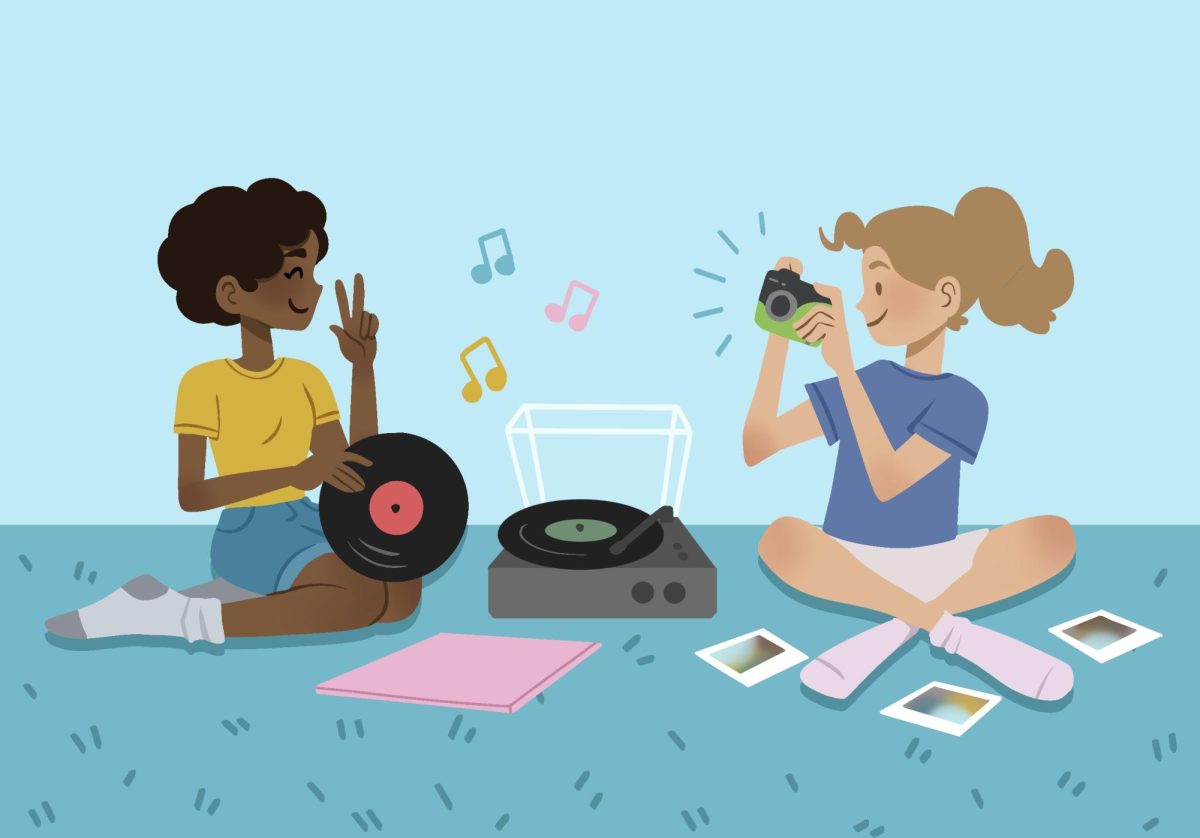Hyperpop is a generation-defining style of music that reflects Generation Z’s nihilistic disposition toward the issues of our time. It is as ironic and self-satirizing as we are. It reflects our disillusionment toward the world through its high artifice and sometimes near-parodical interpretation of traditional pop music while paying homage to the greats.
We’re splicing together the 2010s pop we grew up listening to, as well as futuristic sonic imagery in response to our deep longing for something more authentic than the traditional pop music industry is giving us. We want to party on our own terms, have our cake and eat it, too.
Hyperpop is a Baudrillard-esque fever dream of a genre representative of the simulation we occupy in the internet and mass media landscape of the twenty-first century. It’s emblematic of the hyperreal time we live in, where we use media as a reference to frame our real lives.
The genre draws upon multiple musical influences and nostalgia while dialing it up with complex and innovative sonic landscapes. This sound is curated to our cyber nostalgia in that we are perhaps now modeling our expectations to what we see online and associate our ideas of partying, music and fashion with a jumbled mix of vintage sensibilities and modern technologies. It’s got a little bit of everything baked into it and is the perfect sonic representation of the internet age.
It illustrates our generation’s struggle to place ourselves in history, as iGen members navigating a post-pandemic, post-modern world.
Hyperpop had a huge moment this year thanks to Charli XCX’s seven-time Grammy-nominated album “Brat.” The genre, however, originated in the 2010s, gaining its initial popularization around 2019. The term hyperpop was coined by Glenn McDonald to describe the musical style of duo 100 Gecs — who are known for their unique and highly influential sound.
The genre has roots in the LGBTQ+ community as well and has been remarked upon for its emulation of the ‘80s ballroom scene and its celebration of the unconventional. Many influential hyperpop artists like Kim Petras, Arca and the late SOPHIE, identify as LGBTQ+.
Hyperpop draws from multiple sources — most notably EDM and 2010s pop. Artists SOPHIE and A.G. Cook, both longtime influences on Charli XCX, are largely credited with the origination of the curated hyperpop sound we know and love today.
What sound defines hyperpop, exactly? There is nothing quite like it, sonically or tonally.
Sumanth Gopinath, associate professor of music theory at the University of Minnesota, said hyperpop’s sound lies in its unique production techniques.
“Hyperpop is sort of connected to particular kinds of production practices, especially high frequency trebly sounds and pushing up sort of tempo and pitches,” Gopinath said. “So that things sound kind of toy-like, high frequency and also kind of manic, because they’re sped up.”
Grace Gong, a fourth-year student at the University, said she feels drawn to hyperpop for its melodic and compositional complexity.
“It’s very dense,” Gong said. “I feel like there’s many textures to it. When you’re listening to hyperpop you can kind of focus on one line of instrumentation or something like that, and you can listen for a melody in that line, but then maybe the next second, you’re like, ‘Okay, I want to hear what’s going on in the bass.’”
Gopinath said a lot of hyperpop’s appeal comes from its deviations from traditional pop. Its overproduction of imperfect sounds in a way that is linked with meme music and virality makes it an unusual spectacle to the average listener — especially in a world of pop music made to sound perfect to maximize listenership.
“On the one hand, you have people taking genres and music practices that are pretty tied up with what’s popular and has been popular for the past couple of decades,” Gopinath said. “On the other hand, they’re doing strange things with it, and it sounds defamiliarized, and it sounds weird, and it sounds unusual. I think that’s in a world in which it’s so much easier to make perfect-sounding music. Things that sound imperfect become much more attractive.”
It’s accessible, democratic and irreverent. It plays on what we know and love, pop music, and turns it on its head in an eerie and mystical way. It’s uncanny but also memeified. It’s serious and revolutionary, but like our generation, doesn’t take itself too seriously and embraces absurdity.
We’re a thrift-flipping, curating, hyperpop-listening generation. We’re creating and consuming music that is all at once old, new, borrowed and blue.
Hyperpop has proven itself to be one of the most formative pieces of Gen Z’s cultural legacy.
In short, to understand Gen Z, you should listen to our club classics.













